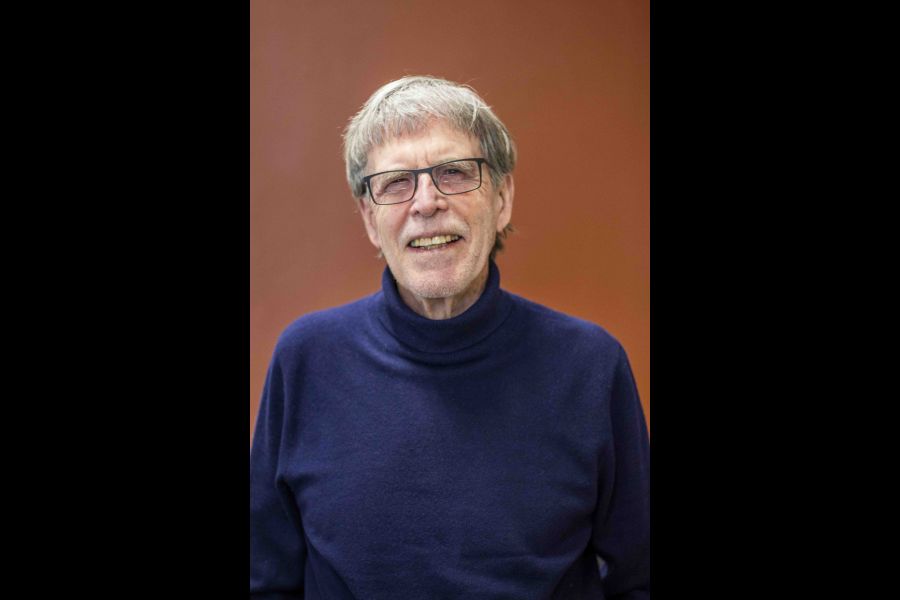This year’s Nobel Prize in chemistry to Barry Sharpless, Morten Meldal and Carolyn Bertozzi was a work of art in science.
It was a beautiful, elegant and compelling story of how the best scientists work: define the challenge, figure out how to solve it and work collegially with colleagues toward the answer.
The late 1900s was a heyday for molecular biology with discovery after discovery. But there was a major stumbling block – building complex molecules was costly, time-consuming and often left unwanted molecular byproducts behind.
The field changed abruptly at the turn of the century, when Sharpless, already a Nobel Prize winner, published a transformative paper that provided an intellectual roadmap for the future of molecular engineering.
If you want to build complex molecules, begin with smaller, easier-to-manage molecules with carbon skeletons, which could be “clicked” together by employing chemical reactions that form strong bonds, don’t interfere with other molecules and leave no unwanted byproducts behind.
Within a year, Sharpless and Meldal, working independently, discovered what was later likened to the crown jewel of the new field of “click” chemistry.
The jewel was the reaction between the azide molecule, which contains three nitrogen atoms, and an alkyne molecule, which contains a triple-bonded carbon atom.
The two clicked securely together in the presence of a copper catalyst, much as matching Lego pieces click together (an often-used analogy by chemists).
By attaching an azide molecule to one molecule and an alkyne molecule to another molecule, the two molecules clicked tightly together. It worked beautifully and provided the missing key to assembling complex molecules from simpler, molecular building blocks.
But there was a challenge for Bertozzi, a biochemist who was interested in studying how glycans work by tracking them going about their business in living cells.
Glycans are complex sugar molecules, which often combine with proteins to form glycoproteins. For example, glycan shields the coronavirus from antibodies.
Glycans are one of the last great frontiers in biology to crack. We know a lot about how RNA, DNA and proteins are created and function, but surprisingly little about glycans, which often cover the surfaces of cells.
Bertozzi needed a click reaction that worked without copper because copper is well-known to be toxic to cells. She discovered the answer in a literature search – change the alkyne molecule into a ring-like structure and bingo, she had the answer – an alkyne-azide reaction with no need for copper.
Now she had a tool to track glycans on the surface and inside cells by attaching a fluorescing molecule to the modified aldyne, which would click with the azide molecule attached to the glycan of interest.
The technique made it possible to visually spot and track glycans and glycoproteins of interest in living cells.
Click chemistry has revolutionized a whole new field in biology akin to the more established fields of DNA or RNA biology, by focusing on the mysterious functions of complex sugars in health and disease.
The 2022 Nobel Prize in chemistry fits in with earlier Nobels to Francis Arnold who in 2018 harnessed evolution to create better, cheaper enzymes, and two Nobel Prizes in 2021.
The first was to David Julius and Arden Patapoutian for their discovery of the genes and related protein receptors that translate touch, temperature and pain sensation into neural signals sent to the spinal cord and brain.
The second 2021 Nobel was awarded to Benjamin List and Dave MacMillan for their work developing organic catalysts as tools for creating more effective drugs. All these Nobels were richly deserved.
Click chemistry turned out to be an invaluable tool in the search for precisely targeted drugs to treat cancer and immunological diseases and a marvellous way to track what’s going on in cells without interfering with their natural functions.
We’re sure to hear more on both fronts in the near future.
Finally in this year of conflict in Ukraine and other human-created disasters, it’s refreshing to know, that at least in some areas of human activity, working together collegially, works as it did so well with these Nobel winners and their many students and colleagues in an area of human endeavour where there is a common language and purpose.
Dr. William Brown is a professor of neurology at McMaster University and co-founder of the InfoHealth series at the Niagara-on-the-Lake Public Library.










